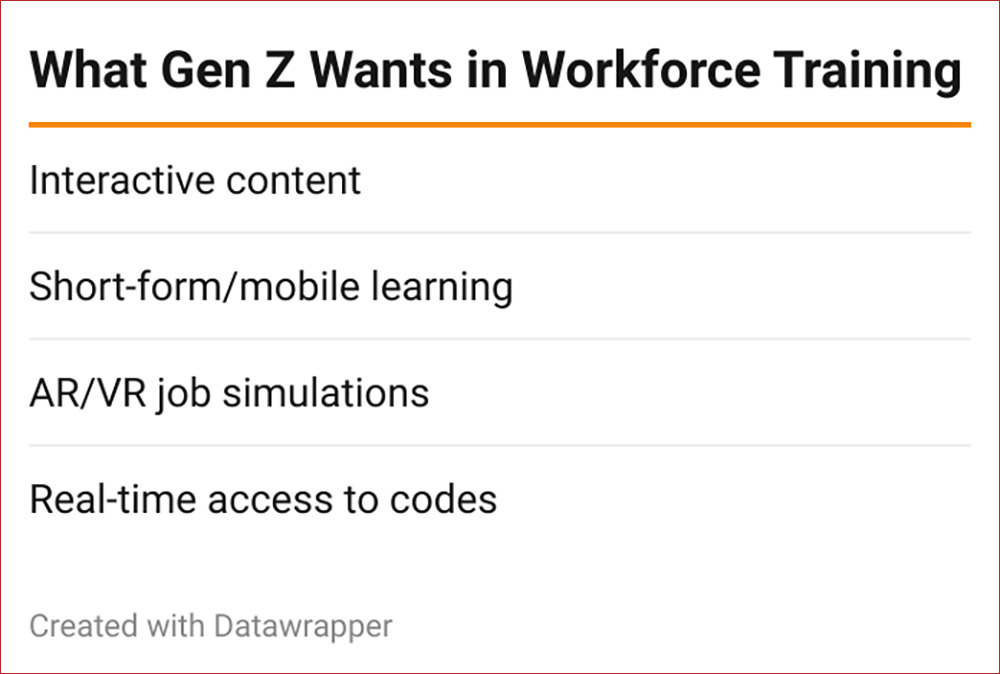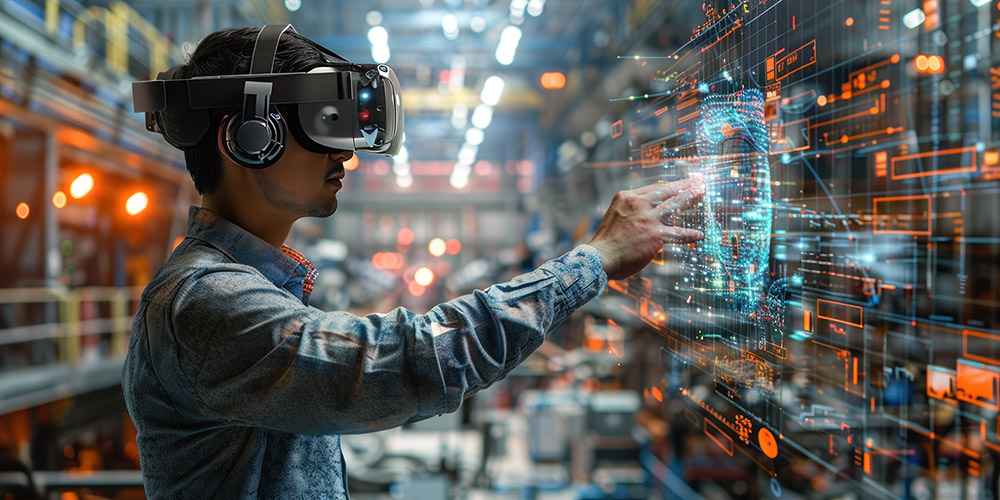The skilled trades are becoming increasingly multigenerational, challenging traditional learning and development opportunities for leaders across the industry. In the first quarter of 2024, Gen Z made up 18 percent of the U.S. workforce, but 18- to 25-year-olds made up nearly 25 percent of all 2024 new hires in skilled trade industries. Furthermore, 47 percent of parents say their children have expressed an interest in pursuing a career in the trades, suggesting a potential Gen Z influx in the coming years.
As organizations look to recruit new workers to the trades, however, they must remain competitive and understand what Gen Z is looking for in a work environment. As the digital-native generation, technology plays a central role in their daily lives, and they expect technology to continue to shape their careers as they enter the workforce. Skilled trades leaders looking to attract and retain Gen Z workers, then, need to meet them where they are by embracing technology throughout the training process, rather than forcing conformity with outdated practices.
Understanding the Gen Z Experience
Gen Z has grown up in a digital-first world. Born between the mid-1990s and early 2010s, technology has been at their fingertips from an early age—a key differentiator from other generations. Electronics have shaped their educational experiences, both in the classroom and across everyday interactions. As they transition to the working world, they’re looking to continue this digital trajectory throughout their career development. As such, employers who fail to understand how deeply ingrained technology is in the lives of Gen Z will struggle to attract and retain new talent.
Gen Z doesn’t view onboarding as a one-and-done process—they want continuous, tech-enabled learning.
Contrary to other generations’ belief that less experienced workers are unmotivated, lazy, and difficult to manage, members of Gen Z are highly motivated by professional development opportunities in the workplace. The problem at present, however, is that employers’ current training practices don’t align with what Gen Z is looking for in a work environment.
Print materials, long-form trainings, and lectures should be a thing of the past in this regard. Gen Z workers are looking for interactive, hands-on online resources that are more familiar with the material they’ve engaged with throughout their educational experiences. The dominance of social media in the lives of Gen Z means that they’re used to instant gratification and hyper-personalized content. In the workplace, this translates to a need for learning that is fast, visual, and customizable.
Employers that view training as a box to check are also misunderstanding Gen Z. Given their demonstrated interest in professional development, they’re looking for their employers to invest in tech-enabled opportunities for continuous learning—in other words, they don’t view their onboarding experience as a “one-and-done” training process. To truly attract and retain Gen Z talent, skilled trades organizations need to demonstrate their commitment to ensuring long-term success and learning for their employees.

Prioritizing Engaging Trainings
Developing digital-first training opportunities isn’t enough to attract Gen Z talent to the skilled trades—rather, employers need to understand what types of technologies will be most impactful and engaging for Gen Z workers. Attention spans are shorter than ever, meaning time is of the essence when it comes to creating effective training programs.
Employers should seek to implement a variety of technologies across their training offerings to demonstrate their commitment to meeting Gen Z where they are. Virtual and augmented reality (VR/AR) trainings, for example, can offer skilled trades professionals an opportunity to prepare for jobsite work in a low-stakes environment. VR allows workers to hone skills such as welding and operating machinery in a safe, virtual setting, while AR overlays instructions for physical tasks for greater accuracy and efficiency.
25
Mobile learning platforms are another excellent resource that allow workers to access short-form interactive training modules when it’s convenient for them. Whether it be a quick video refresher on safety protocols or a full lesson plan to hone a new skill, Gen Z prefers flexible, digestible learning opportunities that mirror the content they engage with outside of work, ultimately improving information retention.
One of the most important tools for today’s skilled trades workers is digital access to the building codes and standards that impact their day-to-day work on the jobsite. Rather than relying on printed manuals that may not have the most up-to-date information, platforms like NFPA LiNK® ensure workers have these critical resources at their fingertips. Digital platforms also allow users to quickly search for the information they need, as well as bookmark content to revisit at a later date.
Loyalty Is Key
Prioritizing tech-enabled learning and development opportunities indicates a commitment to embracing change and innovation—exactly what the next generation of skilled talent is looking for. Nearly 80 percent of Gen Zers will seek out a new job if their current employer doesn’t offer opportunities for upskilling and continued career growth, which should be a major wake-up call for leaders across the skilled trades. To put it simply, if you’re not with the times, don’t expect your newer talent to stick around.
Print manuals are outdated. Gen Z expects real-time, searchable tools that support jobsite success.
Access to digital-first training is indicative of a company’s investment in opportunities that their workforce will truly enjoy and appreciate. Employees want to feel like they are valued and appreciated, and old-fashioned training offerings signal the exact opposite. Embracing the latest and greatest technology, then, is about more than offering the most up-to-date training opportunities—it’s a key virtue signal for attracting Gen Z talent.
What’s Ahead for the Trades
The skilled trades are undergoing a seismic shift as older generations increasingly move toward retirement. Employers must prioritize the tech-first needs of Gen Z professionals to effectively address this generational shift; otherwise, they risk dealing with a revolving door of new talent that won’t stick around long term.
To ensure the continued development of a resilient skilled workforce, it’s crucial for employers to not only embrace advanced technologies but also ensure employees have a clear path for skill development and internal mobility through continuous learning opportunities. Investing in the future of Gen Z professionals will cultivate a more engaged workforce and reduce turnover, ultimately driving innovation in the skilled trades.
A digital-first approach is key to addressing the generational transition; organizations that embrace and empower Gen Z talent will enhance their competitiveness while contributing to a more robust and skilled workforce ready to tackle evolving challenges. It’s not just about attracting Gen Z—rather, it’s important to create an environment where they feel valued, engaged, and excited about their future in the trades.
